LAPD pursuits lead to more than 1,500 collisions over five years
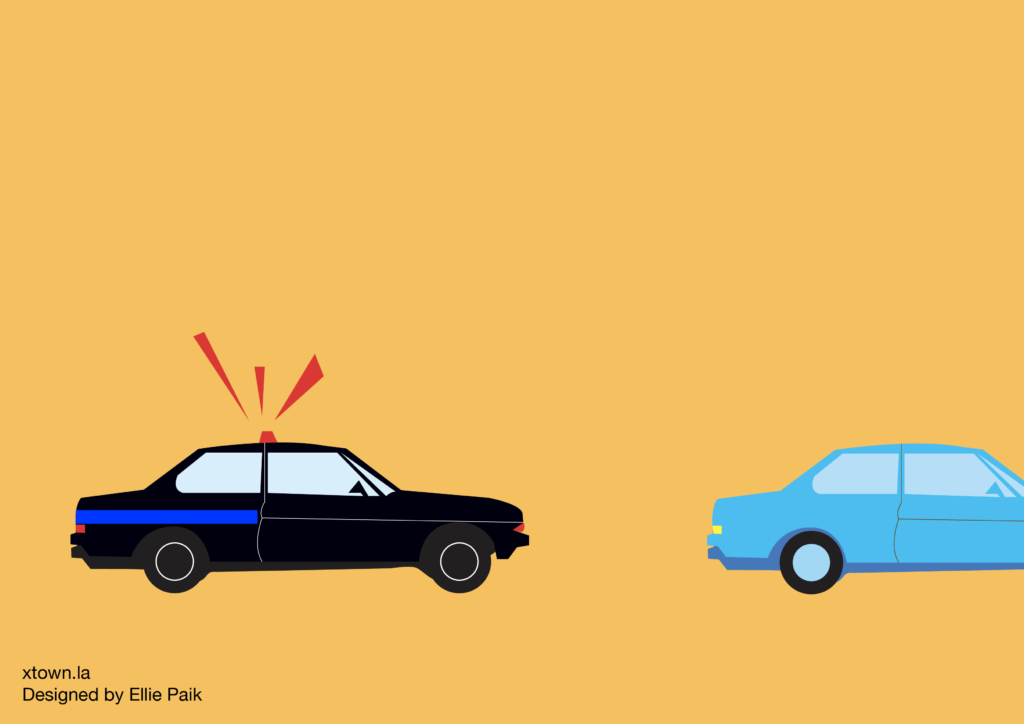
Residents of Southern California are habituated to watching lengthy police chases on the local news. Some last hours. Many end with a suspect on the ground and in handcuffs.
In reality, most police pursuits are over in less than five minutes. The consequence can be severe: Over a recent five-year period, 38% resulted in a collision. Some of those who suffer the most serious consequences are not suspects fleeing police, but rather bystanders or others who may have been unaware a chase was even underway.
[Get crime, housing and other stats about where you live with the Crosstown Neighborhood Newsletter]
Those are some of the findings in a new Los Angeles Police Department report. The 14-page document was presented to the Los Angeles Police Commission on April 25. The goal is to determine how pursuits can be made safer, and to identify when a chase can be terminated, and if there are other means of tracking a suspect’s vehicle.
LAPD Commander Craig Valenzuela, who is with the department’s Traffic Division, admitted being surprised by the results.
“I thought going into this that I would see that the long, drawn-out pursuits would turn out to be the ones that would be most dangerous,” he told the commission, “and in fact that’s wrong.”
From Jan. 1, 2018–March 31, 2023, there were 4,203 police pursuits in the city of Los Angeles. The counts were in the mid 600s in 2018 and 2019. In each of the past two full years, the number exceeded 970.
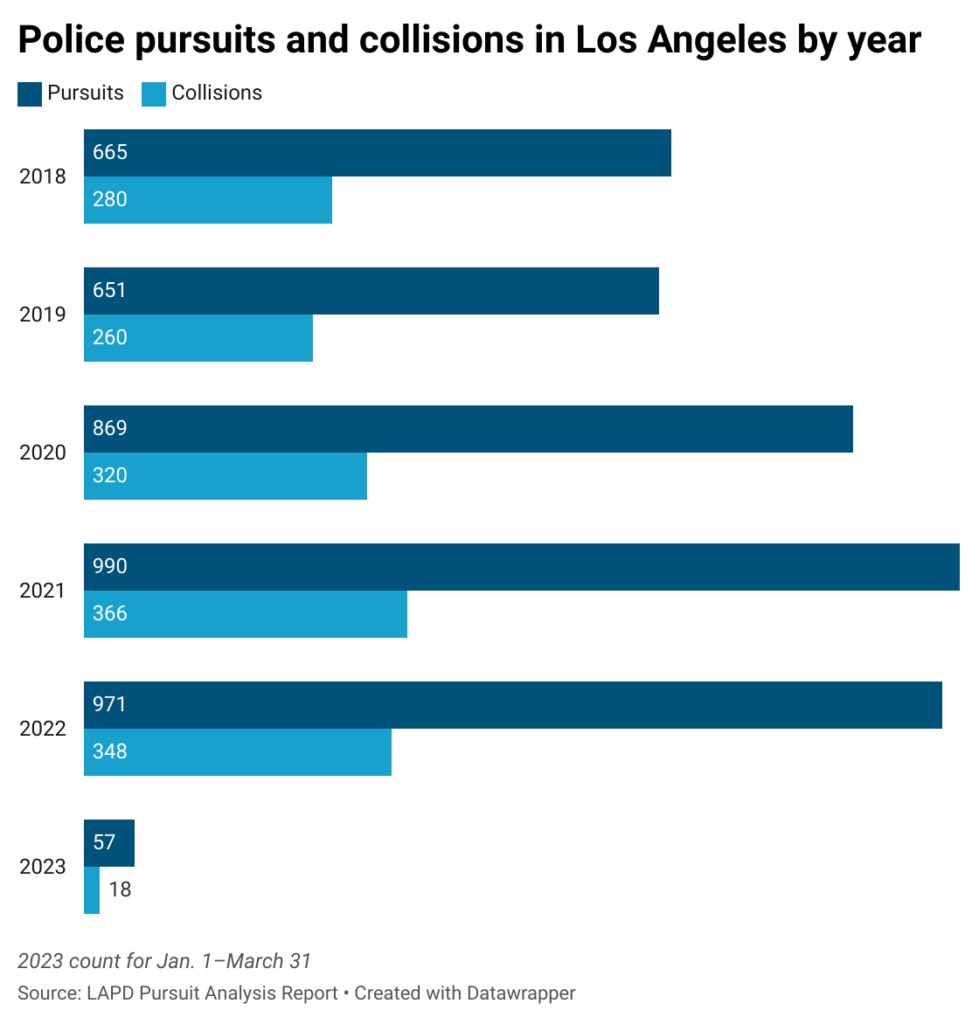
There were 1,592 collisions in that period. According to the report, 1,032 resulted in an injury or death.
In 45% of those collisions, the person injured was the suspect being chased by police. Five of these individuals died.
There were 60 police officers injured during pursuits. None died as a result of a collision.
The greatest impact was on what the report identifies as “third-party victims,” who suffered a total of 496 injuries, or 49% of the total. Nine individuals who had nothing to do with a pursuit were killed.
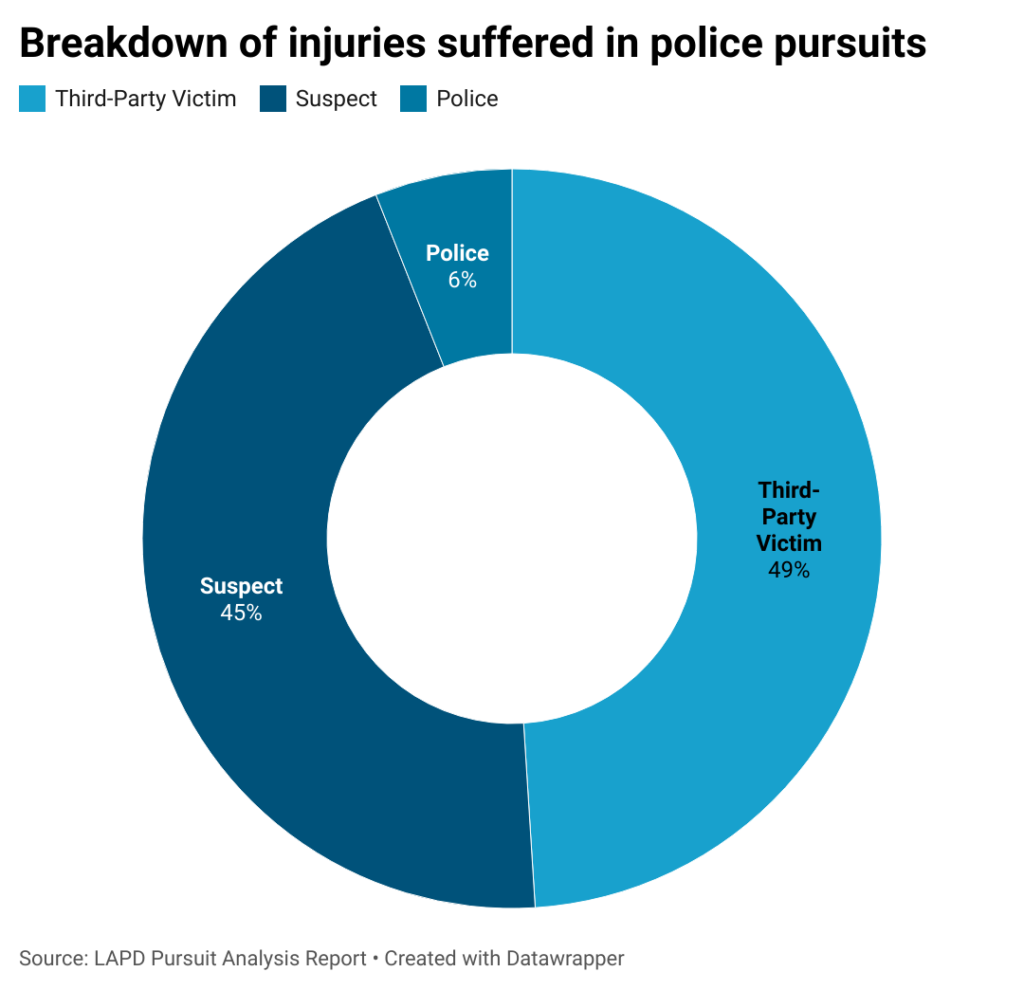
Time and speed
Most pursuits end quickly. According to the report, the average duration is 5.34 minutes. But 72% last five minutes or less.
Similarly, the average length covered in a chase is 4.7 miles, but just over half are less than two miles. An estimated 54% of collisions occur less than two miles from where the pursuit began.
The report went into detail on 35 instances in which someone died or was seriously injured during a pursuit. Only six lasted longer than three minutes.
“Eighty-one percent of the pursuits with the most catastrophic outcome—severe injury or death—lasted less than three minutes,” said Valenzuela.
The dangers of pursuits have gained increasing attention, with observers and law enforcement officials questioning when and whether a high-speed chase is worth the risk. During the presentation, LAPD Chief Michel Moore referred to a trio of deaths this year alone, including one in February in which a 19-year-old college student in Northridge was killed when his car was struck by robbery suspects fleeing police. Moore said that at the time of the crash, the suspects’ vehicle was out of the eyesight of pursuing officers.
The report found that the increase in pursuits comes amid a surge in stolen vehicles, something seen across the country after the onset of the pandemic. Last year, there were more than 25,400 car thefts in the city of Los Angeles. That was up more than 60% from the 15,725 reports in 2019, according to publicly available LAPD data.
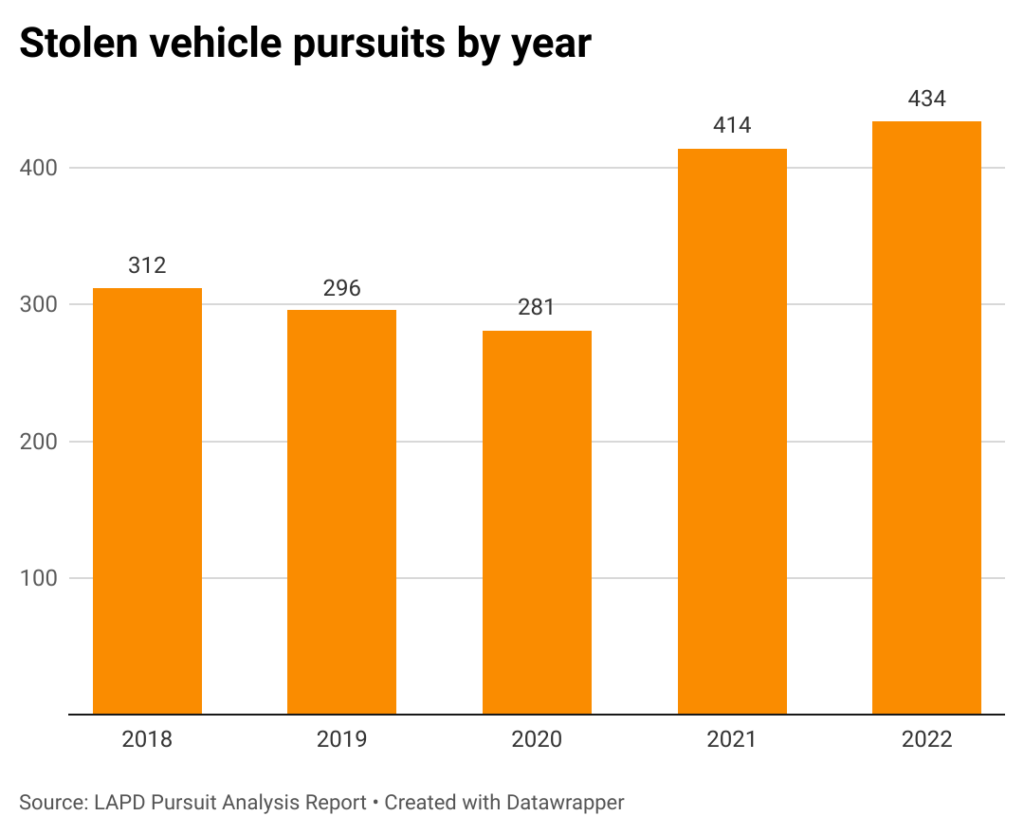
The report found that 44% of the pursuits in the study period resulted from an incident of grand theft auto. Another 17% began with a driver suspected of being under the influence of drugs or alcohol.
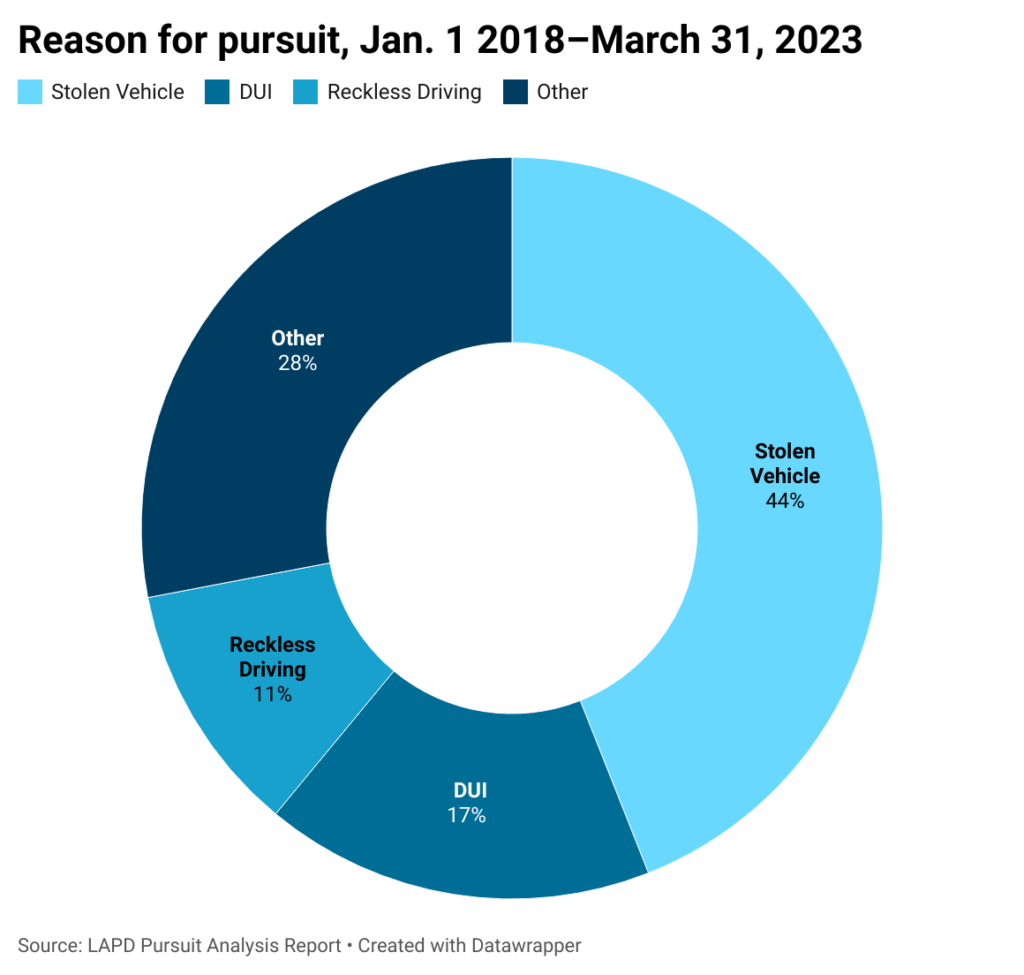
Deputy Chief Don Graham, who oversees the department’s transit services bureau, said that media coverage and the portrayal of police chases on TV and in movies “has given people this glorified idea” of what a pursuit entails. He sought to cast a more sober light on what is happening.
“These are 3,000-pound bullets that are driving around at high speeds in our city,” he said.
LAPD officials said the report will be used to analyze when a pursuit begins and if it should continue. The study refers to the “balance test,” which is intended to be an ongoing analysis. According to an LAPD manual cited in the report, this “requires officers to weigh the seriousness of the offense against the potential dangers to themselves and the community.”
Next steps, said Moore, include examining whether vehicle dash cams or officers’ body-worn cameras can livestream a pursuit to a department higher-up. The senior official could use that video, along with information from an LAPD helicopter or other sources, to determine whether to pull a police cruiser off a fleeing vehicle and instead track it in another manner.
Commissioners also discussed whether a car could be followed by a police-controlled drone.
Another possibility under consideration, said Valenzuela, is looking for a way to launch a GPS tracker from a police car that attaches to a suspect’s vehicle, and allows the termination of an on-street pursuit.
How we did it: We examined the LAPD’s Pursuit Analysis report. We also examined publicly available crime data from the Los Angeles Police Department. Learn more about our data here.
Have questions about our data or want to know more? Write to us at askus@xtown.la.






